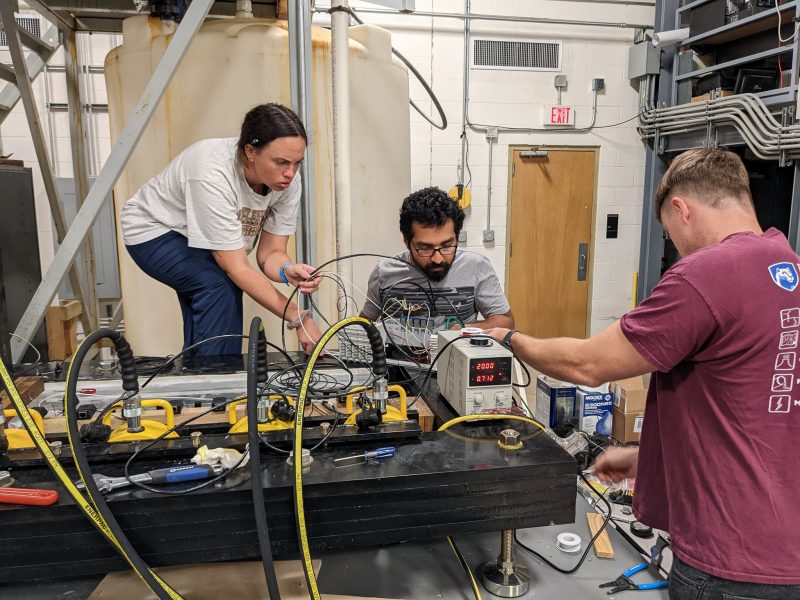Making Earthquakes
March 16, 2023

Researchers at the University of Texas Institute for Geophysics have constructed an experimental device designed to simulate real world earthquakes.
Located in a cavernous warehouse, the car-sized Earthquake Machine holds a 3-foot long replica fault that it compresses between hydraulic jacks until the fault line breaks, triggering a tiny but distinctly audible earthquake within the device. Cameras and sensors record every aspect of each earthquake, giving researchers valuable information about the conditions that cause strong earthquakes and possible precursors that could warn of an impending quake.
The researchers said it can be configured to mimic giant subduction zone faults, like those around the Pacific Ring of Fire, and other kinds such as San Andreas or the complex faults found in the Permian Basin.
The Earthquake Machine began simulating earthquakes in late 2022 and is one of a suite of instruments Jackson School of Geosciences researchers are using to make lab measurements of each stage of an earthquake.
Back to the Geoscientist